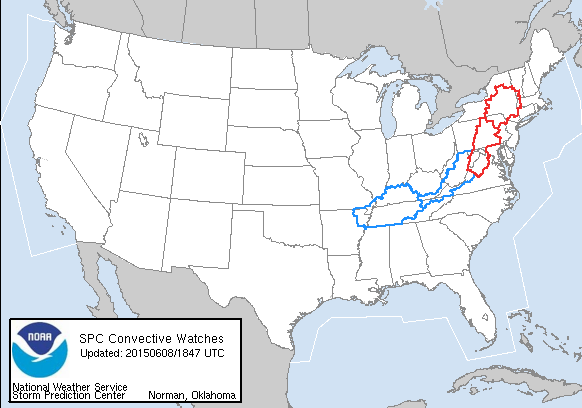First SVR report from downed trees in Shenandoah county at 1848 UTC 8 June 2015. Note the NOAA/CIMSS Prob. Severe Model showed an increase in Prob from 36 to 50 to 84% at 1834 UTC then a rapid decrease back to 36% by 1842 UTC. The using 84% would have resulted in a lead time of 14 minutes. The animation below shows this evolution with the storm headed in to the ground clutter near the RDA.
There was also a notable lightning jump (LJ) from 1830-1835 UTC. It might be useful to include a maximum lighting rate and rate of change value in the meta data of the lighting jump time section. MrSnow/Wacha.


















